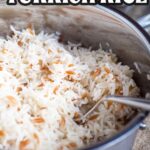
There are many ways to cook rice, but few of them as tasty as the Turkish way. Here’s the recipe and tricks I always use to make Turkish rice, adapted from my Turkish partner and friends – and which I’ve served to dozens of satisfied Turks.
First, an admission. For an embarrassingly long time, I didn’t know how to cook rice.
I mean, sure, I could produce a perfectly fine bowl of rice. But it was either sticky, tasteless, too hard or so soft it was bordering on porridge.
The fluffy kind where you can easily pick out each individual rice grain kept escaping me. In the end, it was my partner who taught me how to cook rice, Turkish style.
Since then, I’ve never looked back.
Where does rice come from?
Rice is an ancient grain, advantageous for its high yields and low moisture content, great for storage or transport. It’s widely associated with Asian food cultures. This is also where it is thought to be first domesticated, more than 10,000 years ago.
Around the Mediterranean, wheat was the more commonly eaten grain. In Turkey and the Middle East, bulgur pilaf in various forms and shapes formed the backbone of the cuisine, alongside fresh bread.
The Persians contributed to the popularisation of rice in this part of the world. Their extravagant pilafs soon caught the attention of Ottoman palace cooks, who brought the delicate grain into the palace kitchens. A spiced pilaf with currants and pine nuts is one of the few Ottoman dishes which survive to this day.
Historically a luxury item, rice pilaf has slowly overtaken bulgur as the staple side dish in much of Turkey and the Middle East as its price has become more competitive.
Though some regions, such as south-Eastern Turkey, still price their bulgur based dishes above all else.
Which rice to use?
In Turkey, as in many Middle Eastern countries, they favour short grain white rice for all purposes.
I’ve long wondered why this is the case. Short grain rice tends to be sticky. Great if you’re making risotto porridge or stuffing vegetables for dolma.
If you’re making rice pilaf, not so much. Here, good quality long grain varieties are superior both in terms of flavour and texture – not to mention ease of cooking.
Yet, Turkish cooks hold on to their beloved short-grain baldo rice even when making everyday rice or rice pilaf, where the goal is to get a fluffy rice, each grain entirely separated from the next. Perhaps this is the reason why cooking rice is commonly seen as the ultimate kitchen test in Turkey.
Most Turks solve this contradiction in terms by using copious amounts of fats, whether butter or oils. The result is sometimes delicious. With good fats, you can hardly go wrong. But if low quality fats are used, the rice often ends up greasy.
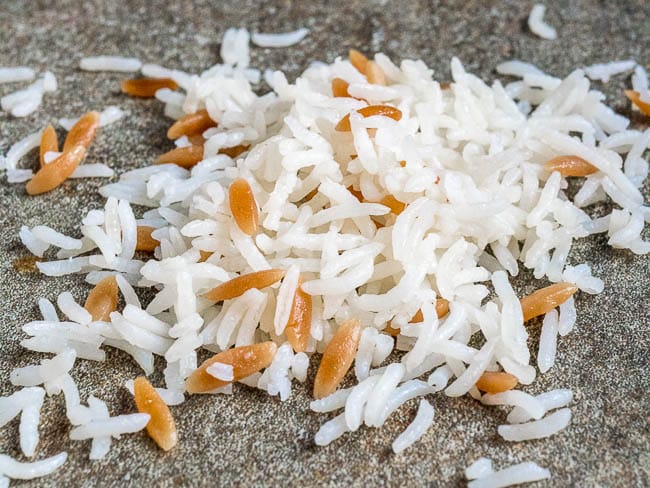
Since short grain rice is clearly not the best suited type of rice for the task at hand, my tentative conclusion is that they use it because it’s what’s been available. Short grain rice simply grows better than long grain varieties domestically.
Because while the Turkish baldo rice is a perfectly fine short grain rice, domestically grown jasmin rice or basmati rice, tend to be of significantly lower quality than their South or East Asian counterparts. They’re thin, break easily and cook unevenly, and with a flavour that produces nothing more than a “meh” as far as rice is concerned.
My preferred rice
Personally, I always use imported sella basmati rice for my everyday cooking. I buy Indian brands (because that’s what’s available where I live) and I find they give a far superior result even for Turkish rice.
Why do I use this rice? Because among the major types of white rice, basmati rice is the most fragrant and delicious tasting. It’s also a great match with the flavours of Turkey and the Middle East, which dominate my kitchen.
Sella rice is parboiled, ensuring a more evenly cooked rice and separate grains, even without the use of fats to aid the process.
Şehriye – the essential ingredient for Turkish rice
Turkish rice has an additional ingredient that sets it apart from plain cooked rice. Tiny pieces of pasta that are browned in a little oil or butter (or just a hot, dry pan). The rice is added once the pasta pieces are golden brown.
In Turkish, these tiny pasta pieces are called şehriye (sheh-ree-yeh), and the finished rice is often called şehriyeli pilav (“rice pilaf with pasta pieces”).
They come in two forms: Orzo pasta (arpa şehriye, lit. “barley noodle”). And angel hair pasta (tel şehriye, lit. “thread noodle”).
In Turkey, you can also by already browned and mixed bags of rice. That is, pasta pieces that have already been cooked until golden brown and mixed with white rice.
This gives the rice a visual appeal and a unique texture.
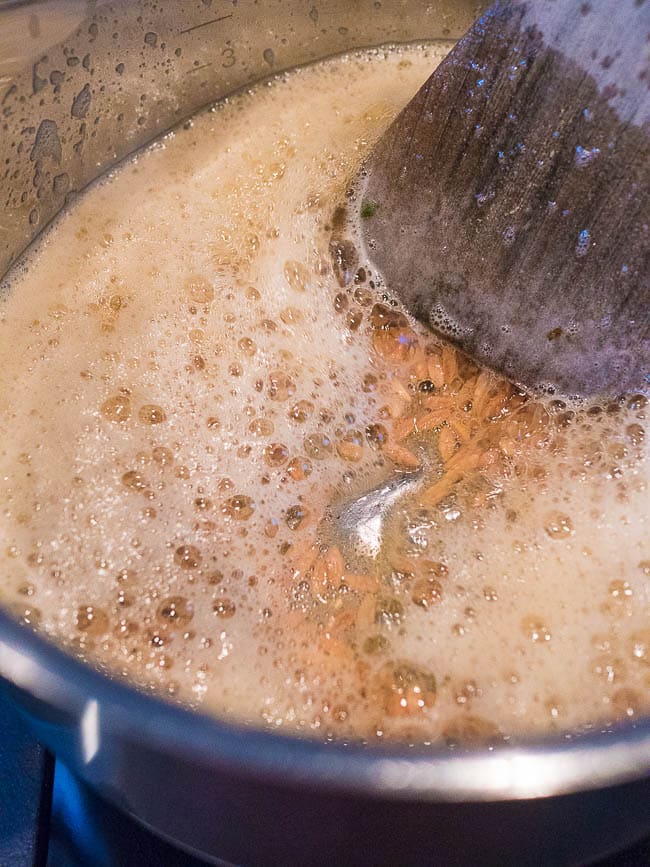
This style of cooking rice is by no means exclusive to Turkish cuisine. They probably learned it from their neighbours. Both of these types of pasta are widely used throughout the Levent for this purpose.
So you could call this “Middle Eastern rice” or “Levantine rice” and it would probably be more correct than calling it “Turkish rice”. It’s a shared food culture across a number of countries and food cultures in this region.
How to cook rice Turkish style
As with anything as important as this, each cook will claim to have her or his own tricks up their sleeve to make it just perfect. Most Turkish recipes follow similar methods, however. The key to success is the rice to liquid ratio, and the cooking and rest time.
Yes, indeed. While choosing a good quality rice helps (see section above), it’s the method that most of all decides whether your dry rice grains turn into perfectly separate, fluffy cooked rice or a mush.
This requires patience. For perfect results, the rice must first be brought to a boil over medium heat in the appropriate amount of water. I recommend measuring meticulously rather than winging it.
You then need to turn the heat down to low. The low heat ensures the rice grains are evenly cooked.
Once the water has mostly cooked out, it’s important to give the rice time to rest and absorb the remaining steam.
As a rule of thumb, the rice should rest at least as long as it has been cooking. Don’t worry, it won’t get cold!
In fact, the best rice I’ve ever had was enjoyed after guests showed up very late (yes, they were mostly Turkish…). By the time we started eating, the rice had been resting for one hour! And it was absolutely delicious.
Granted, this was a big pot of rice, so you won’t usually want to leave it that long. I find 20-30 minutes is perfect for a regular 4-6 serving portions.
Water vs stock/broth
In Turkey, it’s common to use stock to cook rice. Use chicken broth or vegetable broth to give the rice a lot of extra flavour. The flavour boost works really well with Turkish or Middle Eastern stews and other everyday dishes.
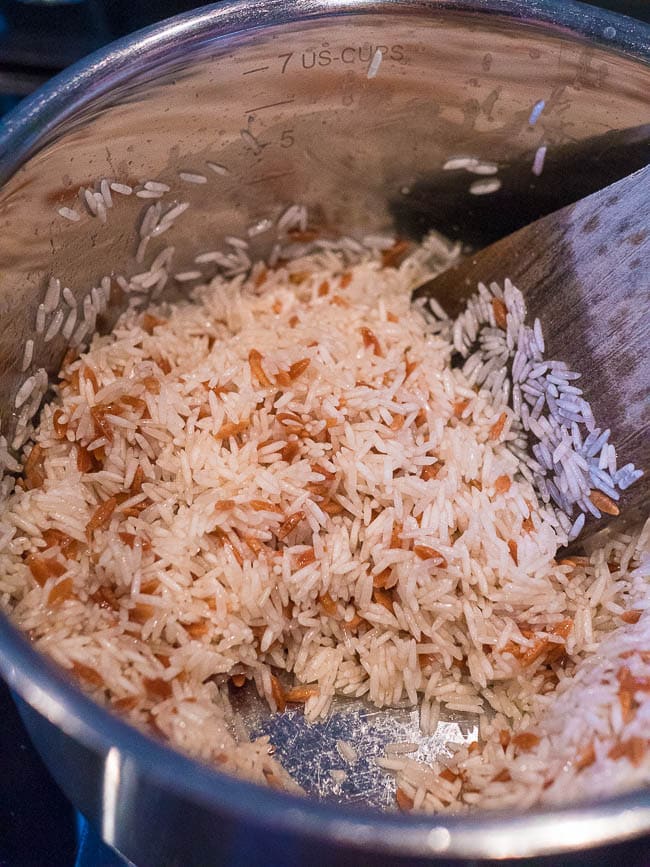
However, most of us don’t keep home made stock at home at all times. Personally, I never use bouillon cubes, as I find it so powerful as to make all foods taste exactly the same.
If using a good quality rice, I find just plain water is usually more than good enough. If you’ve got a great quality stock lying around that needs using up, by all means! But in all other cases just water is fine.
Just make sure to add enough salt to the water! It’ll need more than you think. And salting before rather than after cooking always gives a tastier result.
Do you need to rinse the rice?
Yes, you do. During transport, friction will have caused the starches in the rice to start coming out. The starches make the rice stickier.
You’ve probably seen recommendations to keep rinsing the rice until the water runs clear. The thing is, as long as you get your hands in to rinse, the resulting friction between the rice grains will cause more starches to come out. As such, this could be a never-ending process.
Contrary to what many people think, there are other things that are more important than the rinsing. So don’t worry too much about it.
I usually rinse well in a bowl of water a couple of times. I then transfer it to a sieve, which I leave under running water for a couple of minutes (without touching the rice with my hands), or until the water runs clear. When I start cooking the rice, the cooking water always turns cloudy, but it makes very little difference to the end result.
You can also soak the rice in water for a couple of hours. In this case, the rice will have absorbed more water before cooking. You’ll therefore need to adjust the rice to liquid ratio.
What is the rice to liquid ratio for Turkish style rice?
The rice to liquid ratio varies depending on the type of rice. For a long time, I used a 1:1.4 volume ratio. That is, for every 100 ml rice, I added 140 ml water.
This worked well with standard basmati rice. This is still less than most recommendations. My experience was, however, that anything more would lead to the rice getting sticky or even mushy.
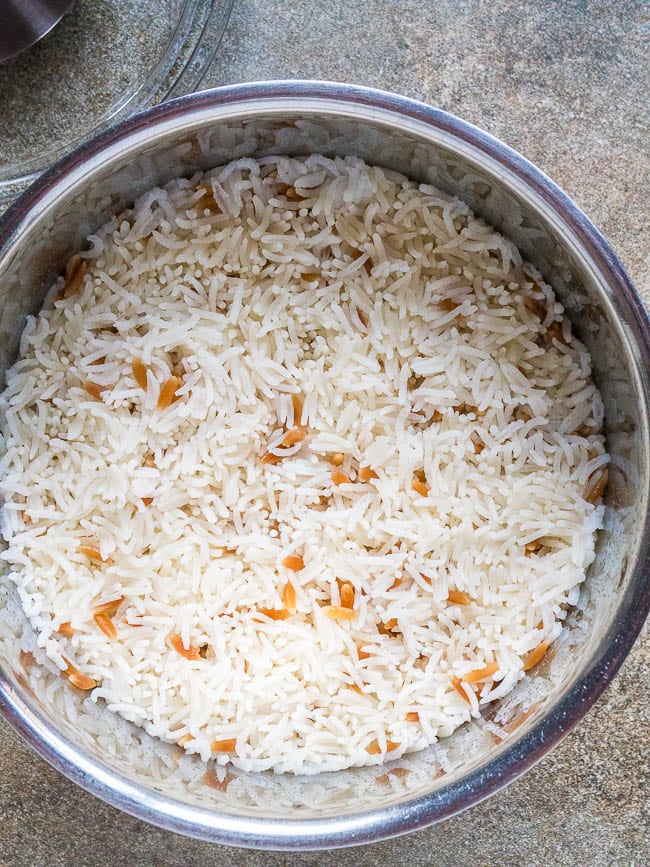
For sella basmati rice, I find a 1:1.5 volume ratio works better. That is, for every 100 ml rice, I add 150 ml water.
These measurements aren’t scientifically exact, but I still wouldn’t stray too far. After years of making rice, I still measure both the rice and water every single time. It’s the only way to ensure a perfect result.
In the recipe, I’ve added weight measurements too, in case you want to get more exact by getting the kitchen scales out.
What fats to use
While basmati rice requires less fats than the short grain rice used by most Turks, it still won’t be Turkish style rice without fats!
I usually use just olive oil (a mild extra virgin) to gently brown the pieces of pasta and fry the rice for a minute or two before adding the water. It’s common to use butter, but I find the butter flavour almost disappears when it’s added at the beginning. It also increases the risk of burning the pasta pieces.
Instead, I quickly add a tablespoon or so of butter as soon as I take the rice off the heat. This way, the butter melts into the cooked rice, giving a deliciously buttery flavour that goes well with Turkish food.
Adding the butter at the end is optional.
Cooking time for Turkish rice
I cook the rice until there is almost no water left at the bottom of the pot. This usually takes around 12 minutes.
After this, I take the rice off the heat. If adding butter, I do this quickly, ensuring as little steam as possible escapes. I then leave the rice, lid on for at least 15 minutes. 20-30 minutes is even better.
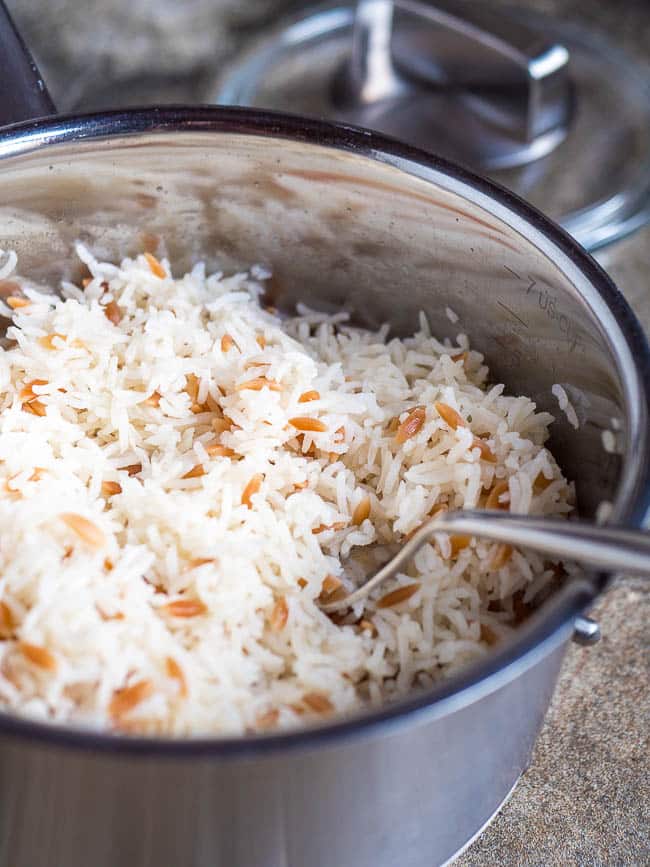
Do not skip the resting time, or your rice will be more sticky and less delicate!
How to serve Turkish rice
This is a versatile and great everyday recipe. It’s tasty enough to be a highlight in itself, yet neutral enough not to overpower your main dish.
In other words, it’ll work well with most things you serve for dinner.
Obviously, it’ll work best with Turkish or Middle Eastern style stews, as well as roasted or barbecued meats. It also works really well with all sorts of warm vegetable or legume based dishes for a complete vegan or vegetarian meal.
That said, it’s also great on its own with a little yoghurt on the side! In this case, add a few cooked chickpeas as well for extra nutrition and flavour.
This Turkish rice recipe serves 4 generously, and can easily be doubled or even tripled, for those bigger families or occasions.
Try these as well:
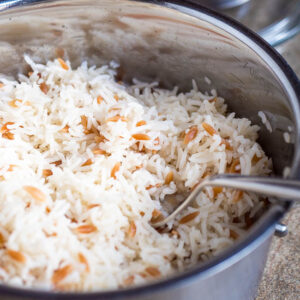
Turkish rice
Ingredients
- 240 g basmati rice, I use sella type
- 2 Tbsp olive oil, I use a mild extra virgin or butter
- 3 Tbsp orzo pasta, risoni/arpa şehriye or broken vermicelli pasta (tel şehriye)
- 450 ml water
- 1 Tbsp butter, optional
- salt
How I make it
- Rinse the rice in several changes of fresh water until the water no longer immediately becomes very cloudy (see text above). Drain.
- Add the olive oil or butter to a pot set over medium/low heat. Add the pasta. Fry until light brown, stirring regularly. Add the rice and ½ tsp salt. Add the water. Put a lid on, bring to the boil and turn the heat down to low. Leave to cook for 12 minutes.
- Take off the heat and leave (without taking the lid off) for 20-30 minutes, or as long as you can bear to wait. For a buttery rice, quickly add 1 Tbsp butter as you take the rice off the heat, closing the lid immediately to ensure as little steam as possible escapes.
- When ready to eat, fluff the rice up with a fork, adding more salt if necessary. For a more buttery flavour, mix in another tablespoon of butter just prior to serving.


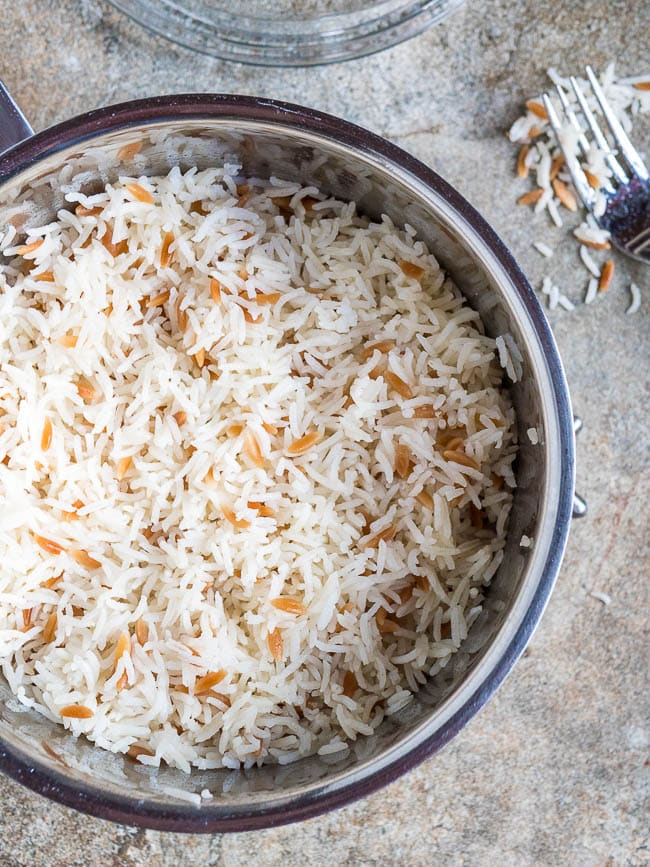
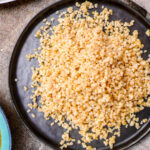
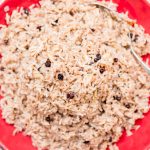


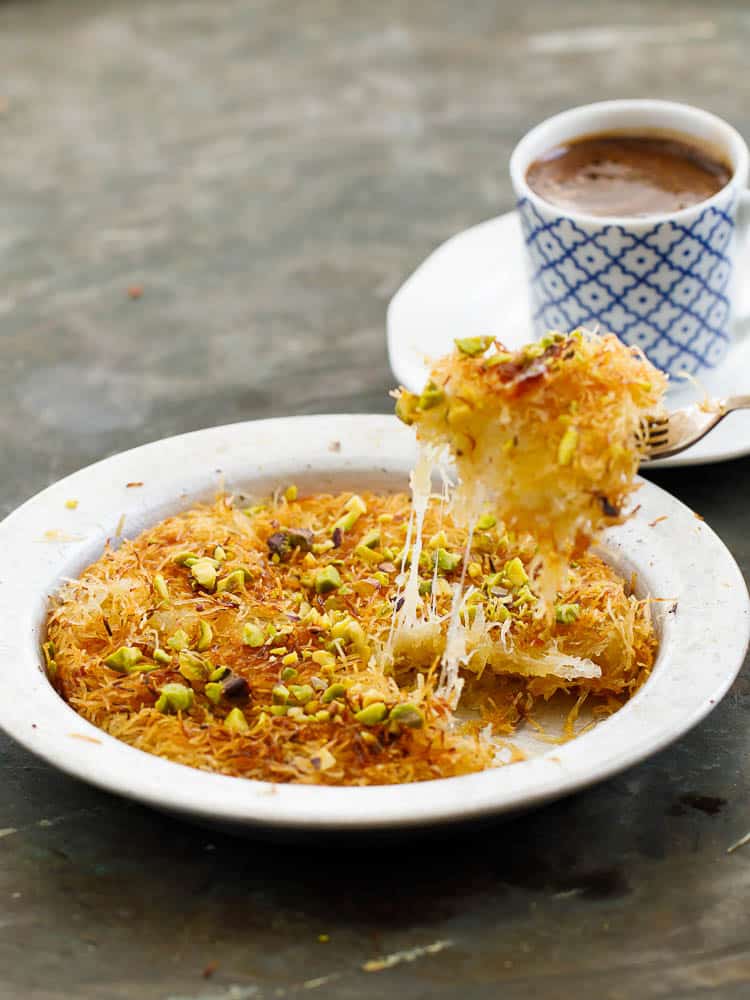
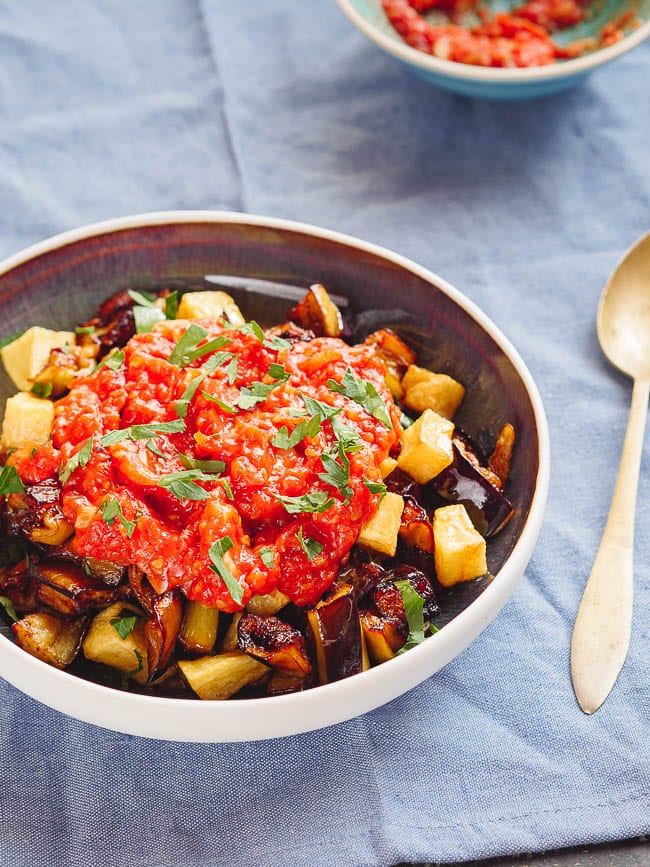
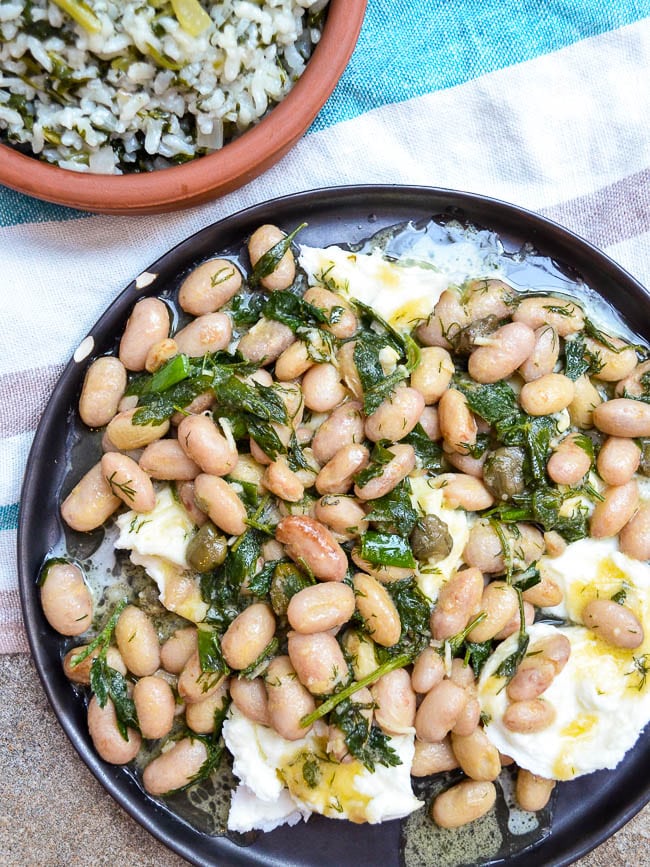
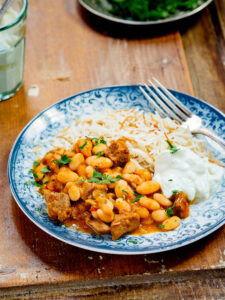
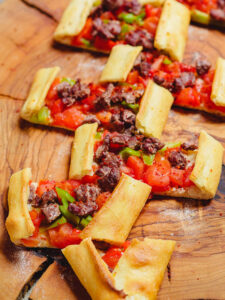
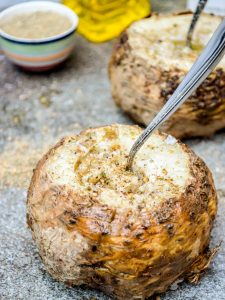




11 responses
What could I use instead of pasta bc I’m following gluten free cooking & eating?
Gluten free orzo pasta is available. If you can’t find it, unfortunately there are no obvious alternatives here. Good luck!
Recent trip to Turkey made me want to find out how to make the delicious rice served with most dishes and I found this really informative and easy to follow. I made it today and I’m very impressed it was perfect however I made too much. Can I freeze it and reheat it please?
I’ve never done it, but you could always try. I don’t see why it wouldn’t work. Just make sure to seal tightly before freezing. Once thawed, you can reheat it in a pan (non-stick is best, unless you know how to make steel pans non-stick with a little oil).
It can be reheated and frozen. Just add a little stock before re heating. Enjoy
I’m married to a Turk and most if not all of his family use basmati rice which I’m fine with since I’m Pakistani. But there’s a wonderful buttery texture to baldo rice that my kids love and so I’ve tried to cook with it. I found that brands of baldo rice can create significantly different results, probably quality and length of time the rice has been lying around but definitely washing the rice thoroughly and leaving the rice to soak in hot water for 30 minutes make all the difference along with rinsing, cooking for a minute or two in the butter/olive oil and most importantly resting gives my kids the perfect bowl of rice they love.
Cooked as instructed, but didn’t put all butter in at the start, I did half butter and half olive oil. I didn’t add any more after removing the rice from the heat, or before serving and I’m glad I didn’t. For me, the rice was a little oily. But may be that’s how it’s meant to be. I was also frugal with the salt, thinking my guests could add more if they wanted, but no one did. All in all, the rice cooked beautifully and I would use this method again, but I would experiment with a little less oil in the beginning. I always cook as healthily as possible, so this went against the grain (excuse the pun) but I wanted the give the recipe the best chance of working.
Glad to hear! There’s no one size fits all, so it’s all about adapting to personal preference. With good quality basmati rice, the fat isn’t necessary to keep the grains separate, only for flavour, so this should still work really well with less butter.
Silly question, do you cook the orzo pasta before you fry it, or fry as dried pasta and then cook in with the rice?
Not silly at all! I add it dry, then it cooks along with the rice. Good luck!
Wonderful tutorial! I usually use Indian Basmati for South Asian or Jasmine for East Asian meals, but was wondering how to cook the short grained rice I had a long time ago in Turkey. I found your discussion very insightful.
Thanks.